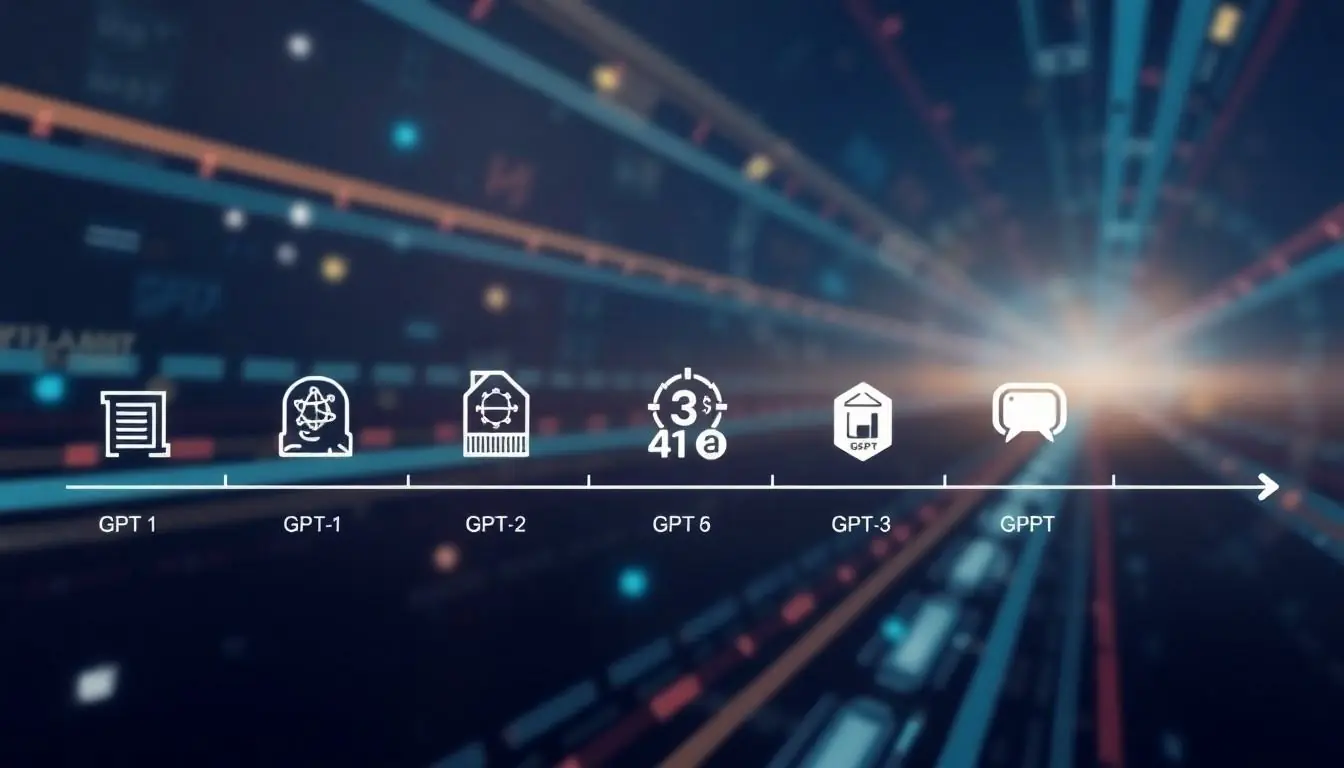Table of Contents
ToggleIn a world where chatbots are popping up like mushrooms after rain, one stands out: ChatGPT. But when did this digital marvel first grace our screens? It’s like asking when the first pizza was made—everyone has a theory, but the answer might surprise you.
Overview of ChatGPT
ChatGPT emerged as a significant advancement in conversational AI technology. Developed by OpenAI, this model belongs to the Generative Pre-trained Transformer (GPT) series. Initial research into transformer models began around 2017, but the first version of GPT launched in June 2018.
OpenAI released ChatGPT based on the third iteration, known as GPT-3, in June 2020. GPT-3 utilizes an architecture with 175 billion parameters, making it one of the largest language models available. With its vast data training, ChatGPT demonstrates a remarkable ability to generate coherent and contextually relevant responses.
The development of ChatGPT reflects the rapid evolution of natural language processing. Users often find it capable of understanding intricate questions and accommodating a wide range of topics. Improvements in fine-tuning techniques enhance its performance further.
OpenAI continues to update and refine ChatGPT, addressing safety and content guidelines mandatory for responsible use. With its growing popularity, many industries have started integrating ChatGPT into customer service, content generation, and personal assistant applications.
ChatGPT’s creation marks a pivotal moment in AI development, highlighting the potential for conversational agents to revolutionize how individuals interact with technology.
The Development Timeline

ChatGPT’s development showcases significant advancements in AI technology. It highlights a series of key milestones that mark its evolution.
Key Milestones
OpenAI set a strong foundation for ChatGPT’s capabilities with several notable milestones. The first version emerged in June 2018, introducing the Generative Pre-trained Transformer architecture. Following this, GPT-2 launched in February 2019, featuring 1.5 billion parameters, a leap in language model complexity. June 2020 saw the arrival of GPT-3, boasting 175 billion parameters, making it one of the most powerful language models at that time. Continuous research and iterations paved the way for enhancements in conversational AI, positioning ChatGPT as a leader in the field.
Important Releases
Important releases shaped ChatGPT’s trajectory and refined its functionalities. The initial model, GPT, established standards for language understanding. Subsequent releases, including GPT-2, improved AI text generation, exhibiting greater coherence. In June 2020, GPT-3 further advanced capabilities, achieving remarkable fluency in dialogues. OpenAI also introduced the ChatGPT variant in late 2020, aimed at enhancing interactive experiences. Each release contributed to an ongoing evolution in natural language processing, resulting in user-friendly applications across diverse industries.
Understanding ChatGPT
ChatGPT stands as a remarkable development in conversational AI, showcasing a sophisticated blend of technology and user interaction. It operates through advanced machine learning techniques, allowing it to generate human-like text based on contextual input.
How It Works
ChatGPT utilizes a transformer architecture that processes language patterns through deep learning methods. By analyzing vast datasets, it understands grammar, context, and even nuances of conversation. Each interaction is informed by previous examples, enhancing its ability to respond appropriately. The model’s impressive fluency results from training on diverse text sources, which equips it to handle intricate queries across multiple subjects.
Major Features
Several key features define ChatGPT’s functionality. It generates coherent responses that align closely with user input. Multi-turn conversation capability promotes seamless dialogue continuation, making interactions more natural. Users benefit from its adaptability to various contexts, allowing it to assist in diverse fields like customer support and content creation. Moreover, ongoing updates focus on improving accuracy and safety, ensuring responsible usage.
Impacts and Applications
ChatGPT has significantly transformed various sectors through its innovative applications and real-world use cases.
Use Cases
ChatGPT serves multiple functions in different settings. Customer support teams utilize it for handling inquiries and providing instant responses. Content creators rely on it to generate ideas, write articles, and enhance creative processes. Additionally, educators use ChatGPT for tutoring and answering student questions, streamlining the learning experience. Developers also implement it in software applications, enhancing user interactions. Each of these use cases exemplifies the versatility of ChatGPT across diverse domains.
Industry Adoption
Many industries have embraced ChatGPT for its capabilities. In the healthcare sector, professionals leverage it for patient communication and preliminary diagnosis. E-commerce companies integrate it into their customer service systems, improving user satisfaction. Marketing teams also adopt ChatGPT for crafting personalized content and automating responses. Finance institutions utilize its analytical prowess for providing timely insights to customers. Adoption spans across various sectors, showcasing its impact and potential to reshape traditional practices.
ChatGPT’s journey from its inception in 2018 to its current status as a leading conversational AI illustrates the rapid advancements in technology. With each iteration building on the last, it has transformed how industries approach communication and interaction. Its ability to generate human-like text has opened doors across various sectors, enhancing efficiency and user experience. As OpenAI continues to refine this powerful tool, the potential for ChatGPT to impact daily life and business practices remains significant. The future of conversational AI looks promising, with ChatGPT at the forefront of this evolution.







